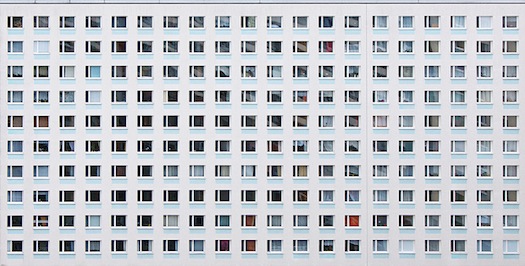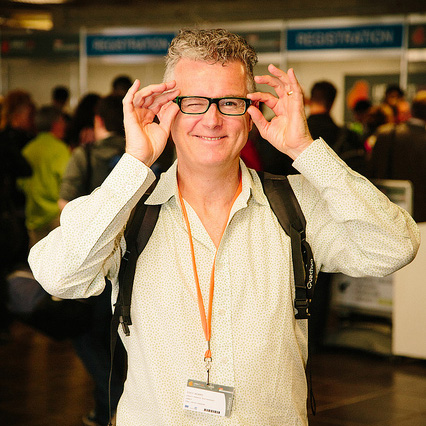Sometimes the Heart of the City is the Loneliest Place
Edited on
22 July 2015
Another take on the North South divide
Spanish, Cypriot and Greek readers might have enjoyed a feeling of schadenfreude on reading the results of a recently published research(link is external) on social cohesion levels across Europe. For, despite their apparent economic success, Germany, Britain, Denmark and other northern European countries scored badly against their southern neighbours.
Cyprus topped the European neighbourliness league, ahead of Croatia and Romania. Spain, in which youth unemployment reached almost 58 per cent earlier this year, had one of the highest levels of life satisfaction in Europe, ranked eighth out of the 28 countries. At the other end of the scale, Britain is the loneliness capital of Europe with its inhabitants less likely overall to know their neighbours or have strong friendships than people anywhere else in the EU, an official study suggests.
Only the Germans are less likely than the British to feel “close” to their neighbours but they also are significantly more likely to have strong friendships on which they could rely in a crisis, the analysis published by the office for National Statistics shows.
The Age of Loneliness
Casting around for a distinctive label for our age, George Monbiot recently coined the term ‘The Age of Loneliness’. He noted that the term ‘digital age’ says plenty about our artifacts but nothing about us as a society. On the other hand, ‘loneliness’ is increasingly identified as a phenomenon affecting the young and old, particularly in those places where economic ‘progress’ is most advanced.
There is some irony in the data(link is external) suggesting that the most technologically networked generation of young people is suffering significant levels of isolation, insecurity and unhappiness. There is growing evidence of the link between social media use and mental health problems amongst the young. A factor appears to be that on line everyone seems to be having a wonderful, successful time, fuelling levels of anxiety and inadequacy amongst many. “Take what you read with a pinch of salt” might be the advice of older generations, but they are not immune to the plague of loneliness either.
Research(link is external) by Independent Age in the UK suggests that severe loneliness affects the lives of 700,000 men and 1.1 million women over the age of 50 in the UK. Estimates suggest that social isolation in health terms is the equivalent of smoking 15 cigarettes a day. Loneliness is bad for your health!
Demographic shift and lifestyle changes
Despite the apparently higher levels of social cohesion in southern (and eastern) Europe, there is no room for complacency. For European cities, a number of drivers raise the prospects of increased levels of loneliness and isolation in coming years. The most obvious of these is the forecast changes in age structures. Across Europe, the tendency is towards longer lifespans and a dramatic increase in the proportions of older people. Eurostat estimates that between 2011 and 2060 the proportion of over 65s in the EU will increase from 18% to 30%. Forecasts indicate that in the same period the proportion of the population over 80 years old in the EU will almost triple(link is external).
But these are not the only factors. A corollary of people living longer is the increased numbers of people living alone. These may be older people whose families have grown up and whose partners have died. But increasingly, the rise in single occupancy households is also a factor, linked to higher levels of divorce/separation and a growing preference to live alone.
Also, where urban areas are fast changing, neighbourhoods are dispersed and the sense of community is being lost. This trend is especially prevalent beyond Europe where intensive urbanization is taking place. In Africa and South America, urbanization rates now exceed those that occurred in Europe during its phase of massive industrialization. But it is in countries like China and South Korea where urbanization is taking place at breakneck speed with huge economic and social consequences.
In China, phenomenon of growing urban isolation is being increasingly well-documented. There, the legacy of the one child policy will have particular consequences. The dislocation experienced by rural dwellers to the city is also a major aspect of this, as is that of the foreign migrant worker. In his Booker-long listed novel, Five Star Billionaire, Tash Awe explored the solitary experience of Malaysian workers who had relocated to Shanghai, the world’s ultimate boomtown.
Seoul is another burgeoning metropolis where the rapid scale of urbanization has destroyed social cohesion and neighbourhoods in the city. Now a megopolis of 12 million souls, many of the old districts of Seoul have been flattened, replaced by towering glass and concrete skyscrapers linked by twelve lane highways.
Addressing the negative social impact of this has been squarely on the agenda of the city’s social innovator mayor, Won Soon Park. His vision is to establish Seoul as the world’s leading Sharing City and a key element of this aspiration stems from a desire to reconnect citizens with one another. Mayor Park has supported the development of a number of interventions designed to address the corrosive phenomenon of urban isolation. One of these is Zipbob(link is external), a food-sharing initiative which brings communities together to cook, network and get to know one another.
Bowling Alone
So, rapid urbanization, changing family structures and increased older age are drivers in this growing challenge. Another is the demise of the mass shared experience, particularly in a increasingly secular and de-industrialised Europe.

Previous generations had lives characterized by high levels of shared experience with others. People – primarily men - worked together in factories, often doing exactly the same tasks as many of their colleagues. Their recreational lives were also shared by many of their peers – cinema, football matches, theatre – compared to now where the Internet and escalating ticket prices have put live entertainment beyond the budget of many. Growing up in Scotland in the 1960s and 70s we had three TV channels and you could guarantee that at school or work on Monday morning most people would have watched the same programme as you on Saturday night.
Perhaps due to the lack of other options, there were higher participation levels in societies and clubs. Again, these reinforced a sense of participation and belonging, and in his seminal book Bowling Alone, Robert D. Putnam explored the collapse of this kind of shared experience in the US, and its implications for society.
The Sunday Assembly
Although this aspect of US society mirrors developments in Europe, there is one major participative activity that separates the two – attending religious services. In Europe, the collapse in church attendance amongst Christians is one of the most marked shifts in the post-war era. Whilst attendance at religious services remains a central component of Europe’s rising number of non-Christians, church attendance is in steep decline throughout the continent, even in the Catholic heartlands of Italy and Spain.
An interesting – and entertaining - response to this has been the development of an innovative pilot project called the Sunday Assembly. This social enterprise, which began in London and is now established in 187 cities across Europe, brings people together on Sunday mornings to celebrate the shared joy of being alive, without the inconvenient element of God. Sanderson Jones, who convenes the ceremonies with his business partner Pippa Jones, argues that people long for the shared experience of celebrating life, alongside the rituals that mark key transition stages, despite the fact that they struggle to believe in God.

Tabloid newspapers have had a field day with the Sunday Assembly, labeling it as the ‘Atheists Church’ but deep down its success reflects the loneliness of modern life, particularly in cities, and people’s thirst for communal experiences with their brothers and sisters.
Healthy connected ageing
To some of us, it was no surprise that the recent Bloomberg Challenge was won by a project aimed at tackling dementia and isolation amongst older people. It was also little surprise that it was won by Barcelona, which is growing a strong reputation of every kind of innovation, after winning the European Commission’s European Capital of Innovation Award (link is external)earlier in the year.
Their winning Bloomberg concept is interesting in the context of our discussion about social media and isolation, because it proposes to strengthen older people’s networks through technology. At its heart, the proposal seeks to build a trust network linking vulnerable older people, adapting technology more commonly associated with teenagers. But the challenge it addresses is the increasing number of vulnerable older people and, even in socially cohesive Barcelona, the need to strengthen their support networks.
Healthy Ageing Cities
As URBACT enters a new programming period, we might expect to see more proposals focusing on older people, and tackling issues such as loneliness and dementia.
URBACT II has had two projects with this focus, interestingly both led by Italian cities. The first, Active AGE was led by Rome between 2009 and 2011. These second, Healthy Ageing cities, was a pilot transfer network led by the city of Udine. The latter explored the extent to which Udine’s model of supporting older people could be transferred to four other cities – Edinburgh, Brighton and Hove, Grand Poitiers and Klaipeda.
Unlike the Barcelona model, the Udine practice relies on a framework of social activities – walking clubs, urban orchards and intergenerational IT events – to stimulate and connect its older citizens. The model is also predicated on using big data to improve intelligence levels on both the location of older residents and to map their changing support needs.
It transpires that Udine, although the ‘giving city’ is also learning from its partners, each of whom has already been tackling the issue of supporting older people in its own way. Looking ahead to the next programming period, this is a theme likely to grown in importance, as cities look to adapt to the needs of the growing proportions of older people in our communities.
By Eddy Adams, URBACT Thematic Expert
Photo credits: gualtiero(link is external) and Melbourne Sunday Assembly
Read more:
Active AGE - URBACT network minisite
Healthy Ageing - URBACT network minisite
 Submitted by Eddy Adams on
Submitted by Eddy Adams on




